
It allows to keep PV going, with more focus towards AI, but keeping be one of the few truly independent places.
-
too early to tell. Depends on how effective the version is.
-
What versions of premiere will your ports work with and will this be a separate product or will it be available to those of us that have already purchased ColorGHear in the past?
Once again, thanks for a very useful tool!
Tony
-
@psywhisper I think it looks great. Not sure I understand the lazy results comment, maybe it got lost in translation. Nice to see 7D footage graded with ColorGHear.
-
Fast grade with CGT. Thanks @shian And i think it very lazy results :(
-
Whoa! Very, very interested in the Resolve version.
-
So far, CS6 is not living up to my expectations. After Effects has some nice new features, really liking it. ColorGhear is loving the new playground. But SG does not live inside it anywhere....yet. SpeedGrade was a "rush to market" add on to the suite. It's not really ready to be a nodule of the whole, no round tripping, no .mts compatibility, no curves (which is baffling, cuz I'm almost sure the full production version had them) The .look functionality has some real potential in terms of adding expanded functionality to CGT as far as quick and easy secondary corrections.
My full thoughts on SG, so far, are here. - http://www.personal-view.com/talks/discussion/2735/speedgrade#Item_23
ANNOUNCEMENT
3 new CGT versions are in the works - Versions for Resolve, PP, and SpeedGrade - details to be made available after build and testing is complete.
-
Yeah, that was the first thing I looked for when I fired up AE CS6, @stonebat. Kind of baffling considering how often they must have heard that request from people. Maybe they want everyone to just use SpeedGrade, lol.
-
No real-time scopes monitoring in AE CS6. That's a bummer. Then it's pretty much same old same old?
-
@Shian - Thanks! When you get to it you'll find that there is no effect to manipulate individual color saturation like in AE. I had to use the 3 way color corrector and selected the appropriate color range to bump up saturation for individual colors. Maybe there is an easier way.
-
@jshzr That looks amazing! I just got PP, so I'll get to work on a version of CGT for PP after I get the Film School up and running.
-
Her face sitting at the wheel of that huge tractor, so funny!
-
I'm having a lot of fun w/ Color Ghear. Haven't touched Magic Bullet since I started using CGT :) To simplify my workflow a bit, I created some presets on Premier CS5 that copied some of the CGT presets. Here's a video w/ the presets. The indoor shots were not so good :( needed to spend more time on them. I love the fact that you are teaching and not just throwing presets at us!
-
A still from one of the CGT Film School Series shoots. Lots of editing to do this weekend. Start looking for tutorials on the site around Wed or Thurs of next week.
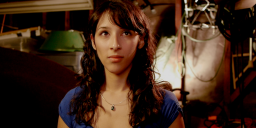
 Elise 3 point.png1072 x 454 - 505K
Elise 3 point.png1072 x 454 - 505K -
@shain, yeah I tend to lean towards a more "orangey"/warm tone myself. But for this, thats more along the lines of what we are looking for. I think it just depends on the individual as well as the scene. I have seen people who love overly blue tones, and to me I really don't like the look, but in certain situations it works. If you are interested in taking a look at a couple other stills I have from our current project, let me know. I have them up on our website, just let me know and I will send you a link.
PS. thanks again for CGT
-
@sanzadez nice work man. I actually kinda prefer the yellowness, but that's me. I dig that yellow tone that's all over Prometheus, mixing blue and yellow and white light is just very beautiful to me. But that's my preference....not everybody's bag, I understand.
-
I was able to access my computer from work, so here are a couple grabs. Note: these are not final. Just a quick test I did with some footage. When it was shot the White balance wasn't properly set so the originals are very warm.
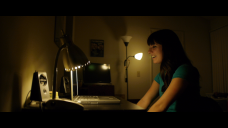
 Comp 1 original(00250).png1920 x 1080 - 5M
Comp 1 original(00250).png1920 x 1080 - 5M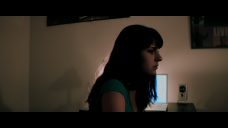
 Comp 2 (02602).png1920 x 1080 - 5M
Comp 2 (02602).png1920 x 1080 - 5M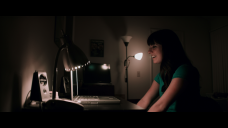
 Comp 1 (00250).png1920 x 1080 - 6M
Comp 1 (00250).png1920 x 1080 - 6M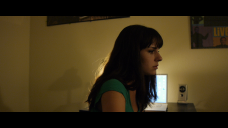
 Comp 2 original (02602).png1920 x 1080 - 6M
Comp 2 original (02602).png1920 x 1080 - 6M -
@shain Your tutorials are the best. Every time I think i have a slight handle on color Ghear, you throw out another tutorial and teach me something completely new, opening up so many more options. The film stock tutorial was great. If I remember to when I get home today, I will post up a couple before and afters of a few quick tests I did after seeing the tutorial. Thanks a lot for the time/effort you put in to these tutorials, and can't wait for the film school videos.
@Mark_the_Harp Same here. The exposure tutorial will be a big help. It wasn't until color Ghear that I started to realize how few of my shots were properly exposed. I'm sure shain's tutorial on it will shed some light and help out.
-
A forum is coming. (Truthfully, one already exists, but I tested it, and the way the site's theme formatted it, it was awful. Impossible to read - gray text on an olive background. So I will launch the forum with the new site theme and design)
The links thing won't work on these vids, as you'll notice they only play within the ColorGHear site - by design. If you try to open them outside the site, vimeo will deny you access.
Maybe someone with free time can make those timecode notes, and I'll create a tutorial notes thread in the new forum, as a sort of CGT wiki to help you out.
-
@Mark_the_Harp You raised interesting point about the reference notes and links! That could be really helpful!
I'll contact @shian and I will offer him a help here with the links and descriptions... I bet he have ton of other things to do.
-
I wonder if a forum on the site might be useful? I am just starting out on the editing/CC journey and as such have quite a few (probably quite basic) questions.
-
@Shian: Thanks for the context. It's very useful. I'll be following the next tutorials closely.
@Mark_the_Harp: Excellent point about the notes. Could serve as a summary and a reference at the same time.
-
@shian Your upcoming stuff on exposure sounds really useful - looking forward to it. As I explore more I realise how few of my shots are REALLY correctly exposed - by which I mean that when I experiment with correction, I hardly need to do any. I can see it makes sense to get it as right as possible when capturing, and I'm really interested in exactly what decisions you make at each step of the way - when exposing and lighting - and how it impacts on stuff further down the line.
I've not really got into ColorGHears yet, but I've found it difficult to learn from some of the videos because if I want to know something specific, I'm faced with 20 mins or so of stuff (which I know is all good, of course) but not exactly where in the video I'm going to find it. Other people (like @stonebat's stuff above) have done wonderful things with ColorGHears, so maybe it's just me, but I'm also new to AE and was hoping this would help me. Just feel really daunted when I see a tutorial is 50 minutes and when I hear, like I did on one video, "Oh no, that's a bug..." it sort of irritates me because it sounds "unedited".
Maybe I'm using the tutorials wrongly. What I've done is to fire them up and then follow what you do, in my own version of AE, and then pause your video and go back and forth between them. If this is how you intended the tutorials to be used, it would be great to have a bit of text describing each section with some links to the different points within the video (which you can do in Vimeo - in your description alongside the video just type in 2:23 or whatever time, and vimeo will create a link to that point in the video when you click on the figures). As a user, it would make it so much easier to experiment on my own and then I could find the appropriate bits in your videos to see how you do it. That suits my personal learning style (ie, decide on a specific technique, see an example of how you did it, try it out for myself on my own footage, review the result, learn from you what would make it better, etc...). Classic learning cycle stuff really. So having links to different points in the video would really help me learn (as in, remember and be able to apply) in bite-sized chunks.
However I also appreciate that's a huge amount of work - and hell, it's an amazing education for the price!
-
@magnus387 would be the one to talk to. He's done it with this video.
And I'm guessing it took quite a lot of masking and processing. I did something similar years ago, and it was quite a chore.
-
@Shian: I was wondering, do you have advice/opinion on how to make video look more 'HDR'? There are some videos of incredible TimeLapse HDR using individual RAW files i wish i could emulate for video. One way that might work is importing a video clip into CS6 Photoshop and applying HDR filters then render out back into a NLE. What do you think?
-
@duartix If you are exposing correctly you shouldn't need to do all that. My tech grade consists of just matching and balancing my shots where needed. I don't worry much about the tech pass, cuz I know the GHears are gonna handle most everything I want to do, so I just do simple levels adjustment for exposure and color matching where needed, and GHear the rest. The Colorfist tutorial stuff with CF was just an extreme exposure scenario. CF is really only necessary when you need to fix poorly exposed shots.
I very rarely have to spend much time doing a tech pass on my own stuff. I white balance in cam, and expose using my handheld meter rather than trusting the camera. Most of my tech pass work is done on multi-cam shoots, and other peoples stuff who haven't learned to use a light meter, and still think the histogram is telling them the whole truth, or are just reading them wrong (meter and/or histogram). I have to fix their stuff a lot. Many people not coming from a 35mm background don't fully understand what their DSLR can and can't do well, and they either dont know to get around it, or aren't even aware that they are using it wrong. I shouldn't be surprised by this, but I am.
Currently working on a tutorial about this for the film school. I won't have the site re-design done yet, but the first 2 or 3 tutorials for the film school should be up as early as next week. In them I'll talk a lot about exposure zones and why its better to get it right in cam, than try to move the image into the proper zone in post.
Howdy, Stranger!
It looks like you're new here. If you want to get involved, click one of these buttons!
Categories
- Topics List23,911
- Blog5,718
- General and News1,330
- Hacks and Patches1,148
- ↳ Top Settings33
- ↳ Beginners254
- ↳ Archives402
- ↳ Hacks News and Development56
- Cameras2,342
- ↳ Panasonic984
- ↳ Canon118
- ↳ Sony154
- ↳ Nikon95
- ↳ Pentax and Samsung70
- ↳ Olympus and Fujifilm98
- ↳ Compacts and Camcorders295
- ↳ Smartphones for video96
- ↳ Pro Video Cameras191
- ↳ BlackMagic and other raw cameras116
- Skill1,959
- ↳ Business and distribution66
- ↳ Preparation, scripts and legal38
- ↳ Art149
- ↳ Import, Convert, Exporting291
- ↳ Editors190
- ↳ Effects and stunts115
- ↳ Color grading197
- ↳ Sound and Music280
- ↳ Lighting96
- ↳ Software and storage tips266
- Gear5,407
- ↳ Filters, Adapters, Matte boxes344
- ↳ Lenses1,577
- ↳ Follow focus and gears93
- ↳ Sound496
- ↳ Lighting gear313
- ↳ Camera movement230
- ↳ Gimbals and copters302
- ↳ Rigs and related stuff271
- ↳ Power solutions83
- ↳ Monitors and viewfinders339
- ↳ Tripods and fluid heads139
- ↳ Storage286
- ↳ Computers and studio gear559
- ↳ VR and 3D248
- Showcase1,859
- Marketplace2,834
- Offtopic1,314
Tags in Topic
- gh2 1276
- gh1 196
- color 90
- grading 76
- effects 48
- after 47
- 5d 29
- correction 19
- 7d 13
- colorghear 11










